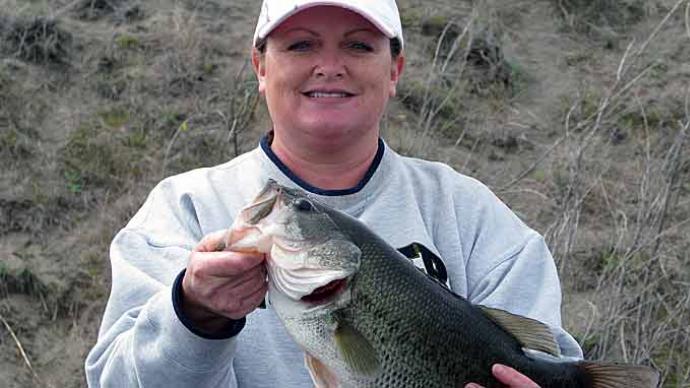
This week, we'll start our way into Spring articles to help you put more bass in your boat during the Spring season. For me, I'm pumped about this as I have not been on open water since late last Fall when I put the boat away for the season.
It may not seem like we are starting to turn the corner from Winter to Spring up here in the Midwest when the temperatures this morning is still below zero, but it's projected to be 40 degrees tomorrow, so we seem to be making some progress towards Spring.
Let’s break down Spring’s Top 5 to start our changing-of-the-season tactics.
Stickbaits
As the bass start to make movements towards shallower water, a great bait to help you dial in where the bass are located is a stickbait. Stickbaits allow you to get a bait deeper than some of the other baits and simultaneously hold the bait in front of the bass. This is what makes this presentation an excellent choice to use at this time of the season.
Bass are coming out of colder water, searching for warmer water conditions looking for food. Keeping your bait in the fish zone will help trigger bites when other baits fall past the bass. At this time of the season, it's essential to carry a few different baits with you to fish the zones that the bass will be holding. Different stickbait brands perform differently, so experiment with baits to find what works for you and how you fish a stickbait.
You can make a few different adjustments to help you get your baits dialed into the fish zone better. The most straightforward adjustment is to up the size of your hook or to add another split ring if your bait is not getting deep enough. If you need more weight, start to add lead dots or strips to your baits' belly to get or keep your baits in the bite zone.

Line size is also critical. Use the smallest line size that you can get away with. I fish my stickbaits on 10lb Sunline Crank FC. One more point, fish your sticks on fluorocarbon line as it sinks where monofilament line floats, limiting the depth that your stickbait can reach.
Spinnerbaits & Bladed Jigs
Many think that spinnerbaits and bladed jigs are the premier search baits during the Springtime. I would have to agree with that statement in many cases, especially in shallow backwater bays that attract bass, as these areas often warm up first. Blades let you cover water and fish through newly emerging cover that other baits won't be able to get through without getting fouled.
One of the biggest reasons these baits are great is that you can reconfigure how they fish on the fly to match the conditions you're faced with. You can easily change the look of both baits by changing blade color and the skirts and trailers to match the forage in your waters.
Pay close attention to the blade shape you're fishing. Conditions can change from day to day with the weather and bite conditions you will face on the water. By adjusting your blade makeup, you can change how your bait runs and the depth that it can reach. This is key when fishing in the early part of the season.
Square Bills
I have turned towards square bills to help me find early season bass and get them into the boat. Once again, I'm depending on keeping my bait in the bite zone longer than I can with other baits I fish during this part of the season, especially when the bass are just starting to make early movements into shallower water. You can't do this with some of the other presentations on this list. Use this to your advantage when needed.
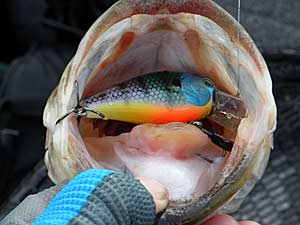
You will also generate more strikes from a bait that contacts the cover bass are holding in and around. For this, there are no better baits than a square bill. The more contact with the cover that you're making with your square bill, the more bass you will trigger and catch along the way.
Make your cast, reel your bait down to the zone, and start it back to the boat. When it contacts the cover, give the bait a rip and pause it. Keep the bait in the bite zone if you can for a few seconds before you start it on its way again. During the early part of the season, I have had days that this was one of the best ways to generate strikes. If I did not hold my square bill in the zone, I could not generate bites.
Another thing I need to point out is to make sure that you stock both rattle and silent square bills in your crankbait box, as this has also impacted generating bites during difficult bite windows.
Swim & Weed Jigs
I fish a bullet head jig for my weed jig and swim jig throughout the season. Early in the season, it's easy to switch between jig presentation tactics—no need to fish two different jigs. I can get done what is needed with just one jig.
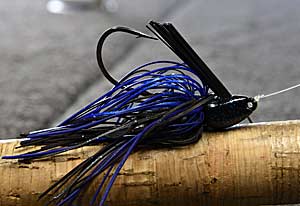
Fishing this two-pronged jig pattern, I can swim my jig through an area that I think is holding bass and stop and drop the jig into the cover that I think is holding bass all in the same cast. This makes covering water quicker and more productive trying to get clues as to what cover the bass may be holding on or located in.
Depending on the depth of the targets I'm fishing, I'll fish either a 3/8oz or 1/2oz jig. If it comes out to be a pattern that varies enough between the swim jig and the casting jig, I'll tie on two different jigs set up to target areas better when needed. I also may do this if the two presentations are varied that much on any given day.
Tubes
If there was an automatic bait on this list, it's the tube, so you can say that I left the best for last. There is something about tubes and Springtime bass that they go together. Let’s break down tube tactics in a little more detail for Spring. I want to focus on fishing a tube during the early season on a tube jig.
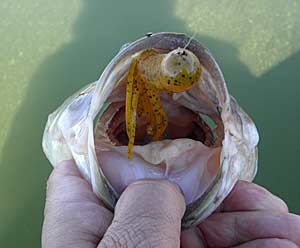
When it comes to fishing tubes on a jig head, pay special attention to the eye angle of your jig that you're rigging your tube on. When the bass are locked on the beds later in the Spring season, you will want to rig your tubes on a 90-degree eye jig head. When fished on a slackline, this will allow your tube to fall in a circle above the bass as it settles to the bottom. This is a crucial presentation to use when the bass are sitting on beds. This is the same setup that came in the original Gitzit tube package. The jig head had a 90-degree eye when first introduced to the bass world many years ago.
When bass move towards the shallows and prepare to spawn, I use a jig head equipped with a 60-degree eye. I get more of a gliding action out of this tube presentation. This setup allows me to cover water quicker and better when looking for signs of bass on the move.
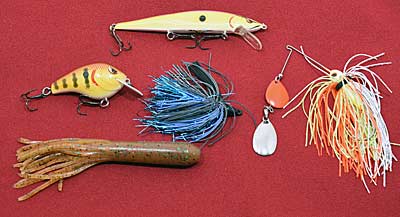
I use a simple ball head jig or a tube head. I have found that the jig head doesn't matter. It comes down more to the eye angle of the jig. That's essential when it comes to this part of the rigging. I'm also inserting my jig head inside the tube for this tactic.
If the weeds I'm fishing are thick and I'm having a tough time getting my tube through the weeds clean, I may switch to a Texas rigged tube to get the tube through the cover cleaner and help generate strikes.
I hope my Spring Top 5 are the baits you have on your list. Some of your choices may be different from mine because of the area that you live in, and I understand and support that. The best advice I can give to any bass fisherman is to get on the water and start searching for signs of bass. Grab your favorite lure and start to cover water looking for results. To all best of luck to you this Spring on your favorite bass waters.
BassResource may receive a portion of revenues if you make a purchase using a link above.


